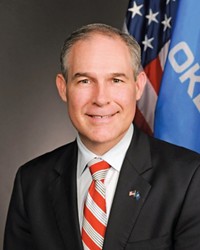Advertisement
Grab your lab coat. Let's get started
Welcome!
Welcome!
Create an account below to get 6 C&EN articles per month, receive newsletters and more - all free.
It seems this is your first time logging in online. Please enter the following information to continue.
As an ACS member you automatically get access to this site. All we need is few more details to create your reading experience.
Not you? Sign in with a different account.
Not you? Sign in with a different account.
ERROR 1
ERROR 1
ERROR 2
ERROR 2
ERROR 2
ERROR 2
ERROR 2
Password and Confirm password must match.
If you have an ACS member number, please enter it here so we can link this account to your membership. (optional)
ERROR 2
ACS values your privacy. By submitting your information, you are gaining access to C&EN and subscribing to our weekly newsletter. We use the information you provide to make your reading experience better, and we will never sell your data to third party members.
Regulation
U.S. Supreme Court nominee Brett Kavanaugh likely to limit regulatory authority
Current district judge is viewed as reliably conservative, deferent to presidential power
by Jeff Johnson, special to C&EN
July 11, 2018
| A version of this story appeared in
Volume 96, Issue 29

If confirmed to the U.S. Supreme Court, U.S. District Judge Brett M. Kavanaugh will be reliably conservative and show deference to presidential power, legal scholars say. He is also likely to limit authority of regulatory agencies such as the EPA and OSHA.
Kavanaugh has served for 12 years on the D.C. Circuit Court of Appeals. He has voiced skepticism about the validity of several key environmental laws. Among them is the Clean Power Plan, which seeks to reduce carbon dioxide emission from coal fired power plants, notes Ann Carlson, a UCLA law school professor and environmental law expert. Kavanaugh also voted to strike down the Clean Air Interstate Rule, which regulates cross border pollution from power plants—a decision that was later overturned by the Supreme Court, Carlson adds.
She and many other environmental attorneys expect Kavanaugh to recognize the importance of environmental problems but not to turn to the courts or even EPA for their solution. “Judge Kavanaugh, in other words, may believe that global warming is a real problem, but he’s not going to recognize EPA’s power to do much at all to regulate greenhouse gases,” Carlson says.
Similarly, in a 2013 district court opinion, Kavanaugh sought to limit OSHA’s authority to regulate workplace safety, according to Jordan Barab, a former OSHA deputy administrator. In a blog, Barab notes that Kavanaugh was in the minority on a decision backing an OSHA citation and new safety requirements following the death of a Sea World trainer. Kavanaugh argued the fine and regulations were “arbitrary and capricious” as the trainer had accepted the risk of death as part of her job and OSHA had no legal authority to regulate dangerous entertainment.
The other justices disagreed, pointing out that Sea World was indeed covered by OSHA and the law creating OSHA puts the duty on employers to create a safe workplace, not on employees to choose whether to accept death as part of the job.




Join the conversation
Contact the reporter
Submit a Letter to the Editor for publication
Engage with us on Twitter